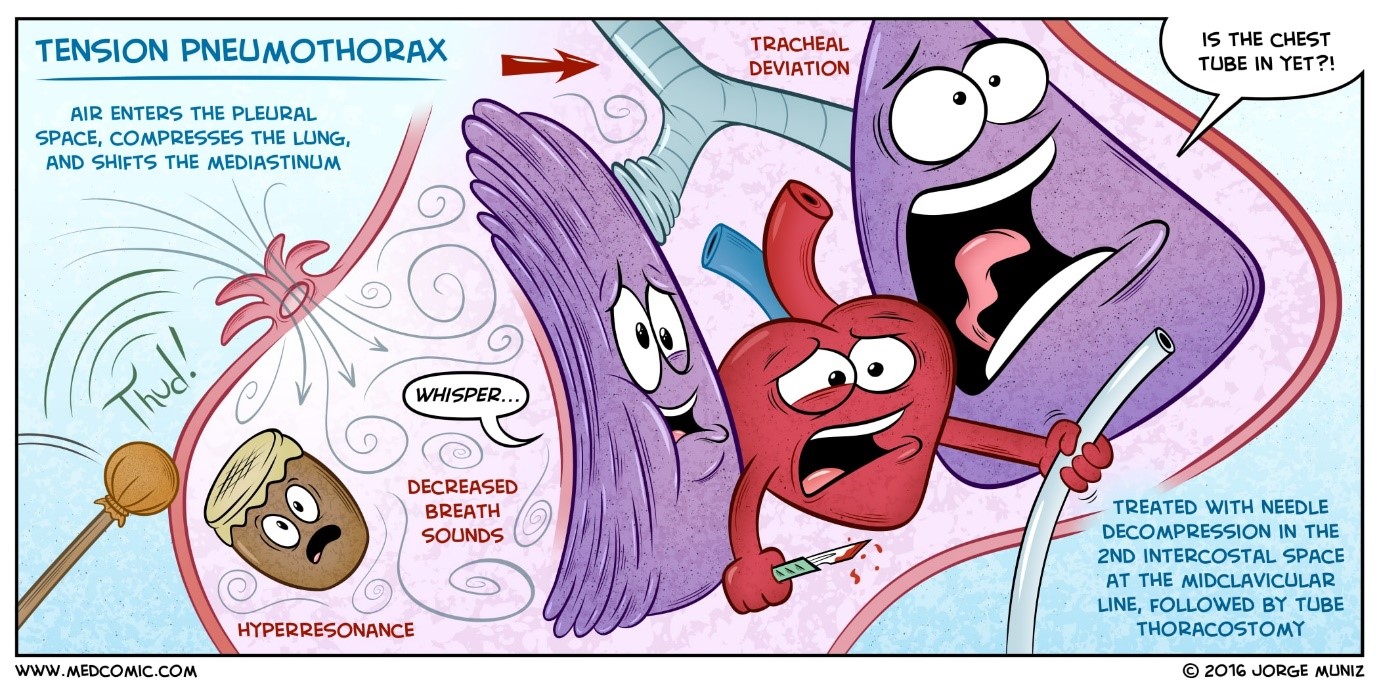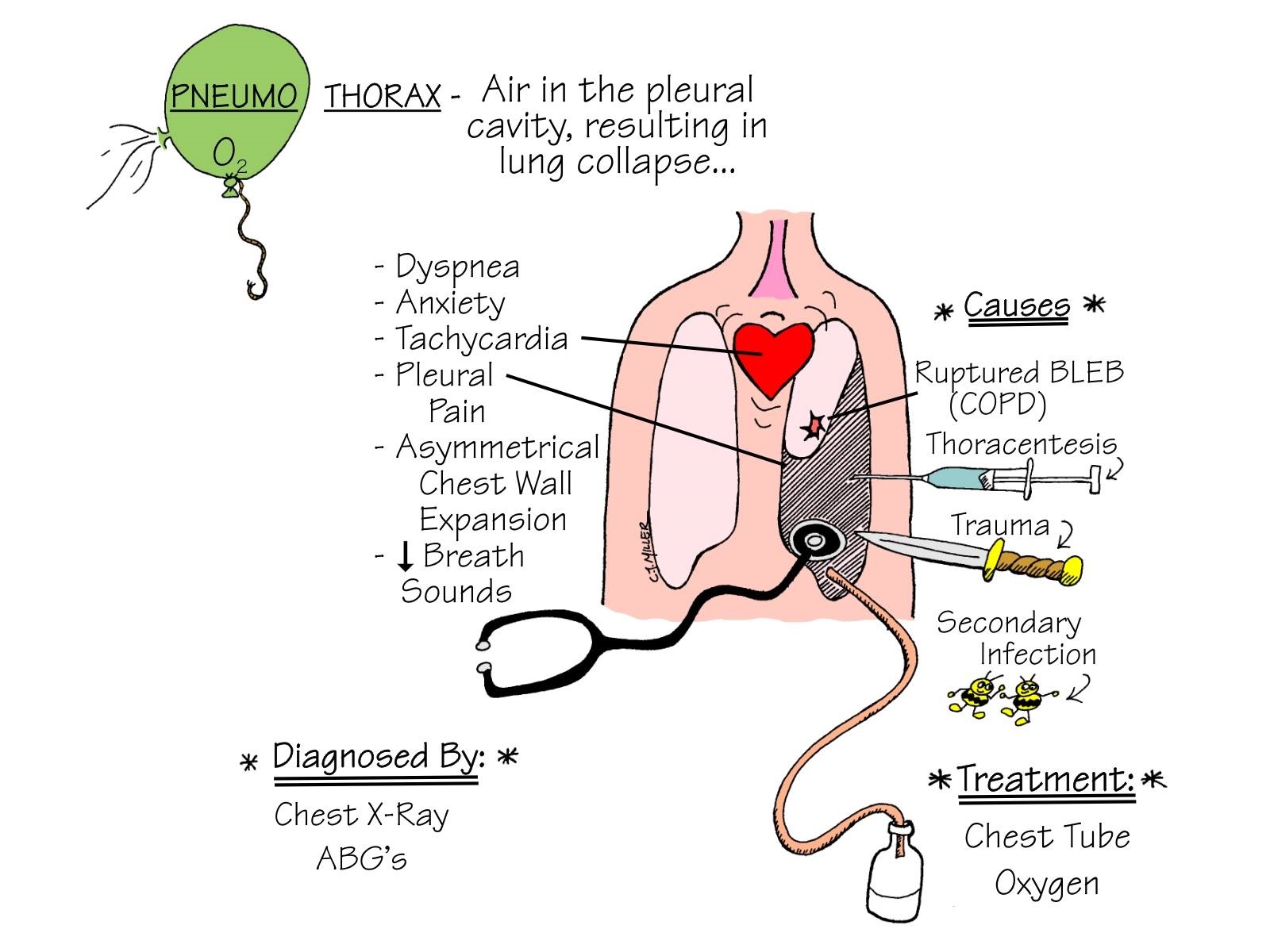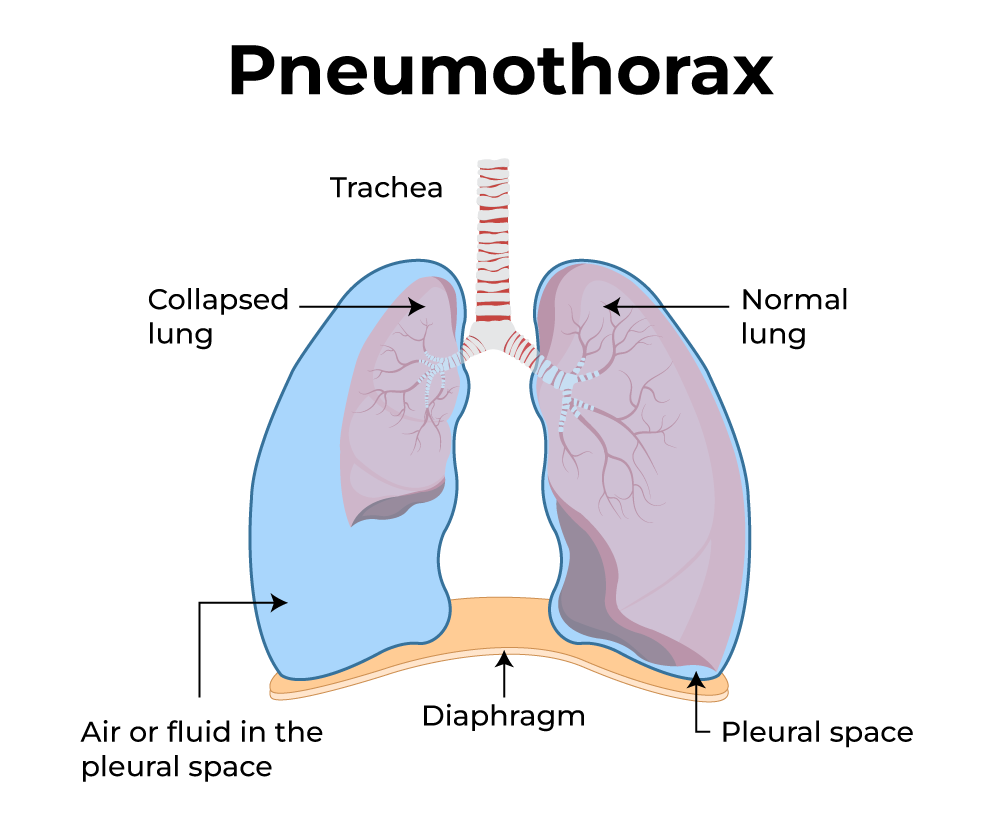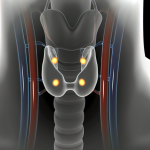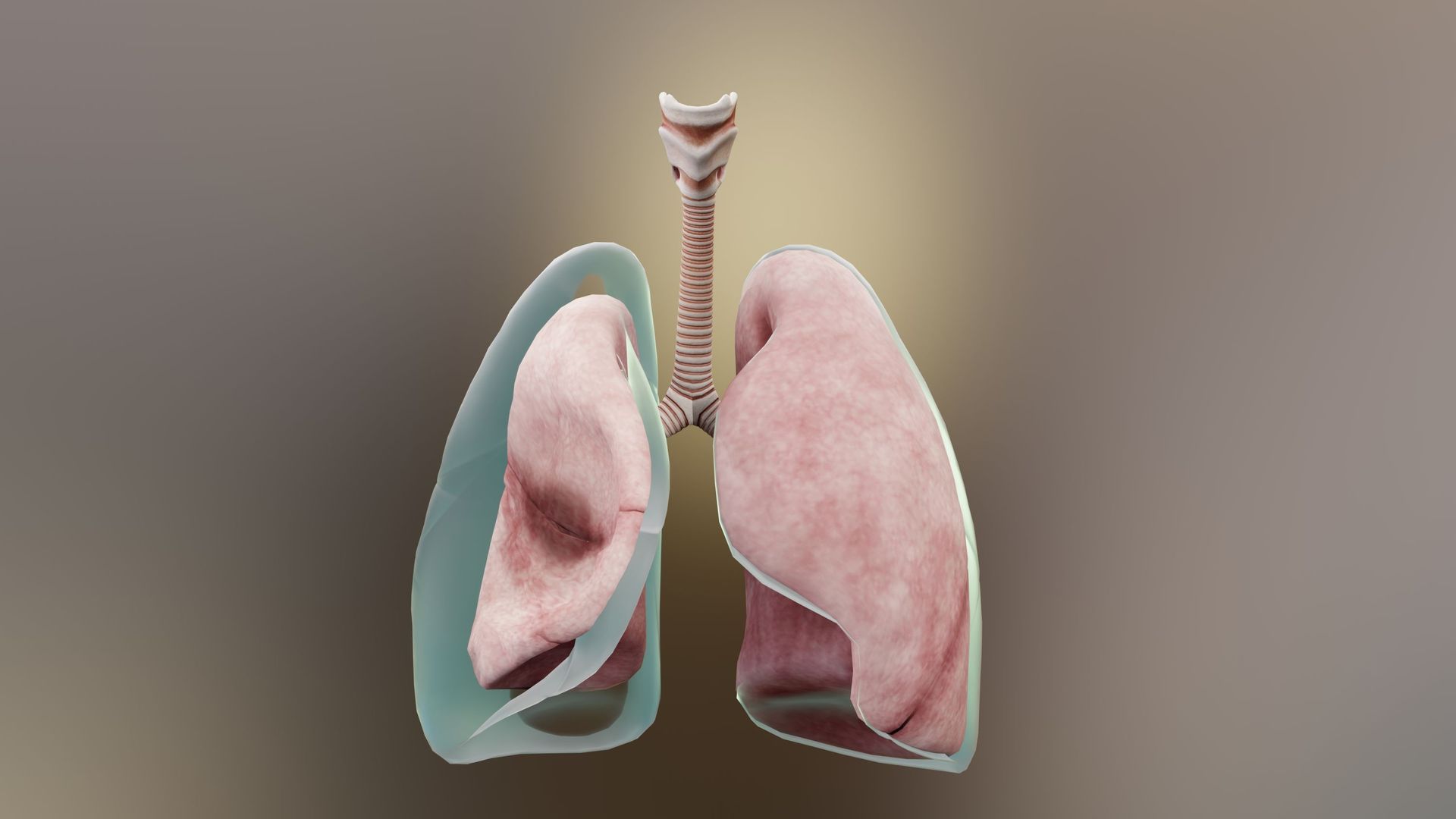
Key facts
- A pneumothorax is when air leaks into the space between one of your lungs and your chest wall.
- The most common symptoms are sharp chest pain and breathing problems.
- Treatment will depend on your symptoms, as well as the type and size of your pneumothorax.
- A tension pneumothorax is a medical emergency that needs immediate treatment.
What is pneumothorax?
A pneumothorax is when air leaks into the space between one of your lungs and your chest wall. This is called the ‘pleural space’.
A pneumothorax can cause a ‘collapsed lung’ when the air in your pleural space pushes on your lung. In most cases, only some of the lung collapses.
A tension pneumothorax is when there is increasing pressure in the air around your lung. It causes the heart and lungs to stop working properly and is a medical emergency.
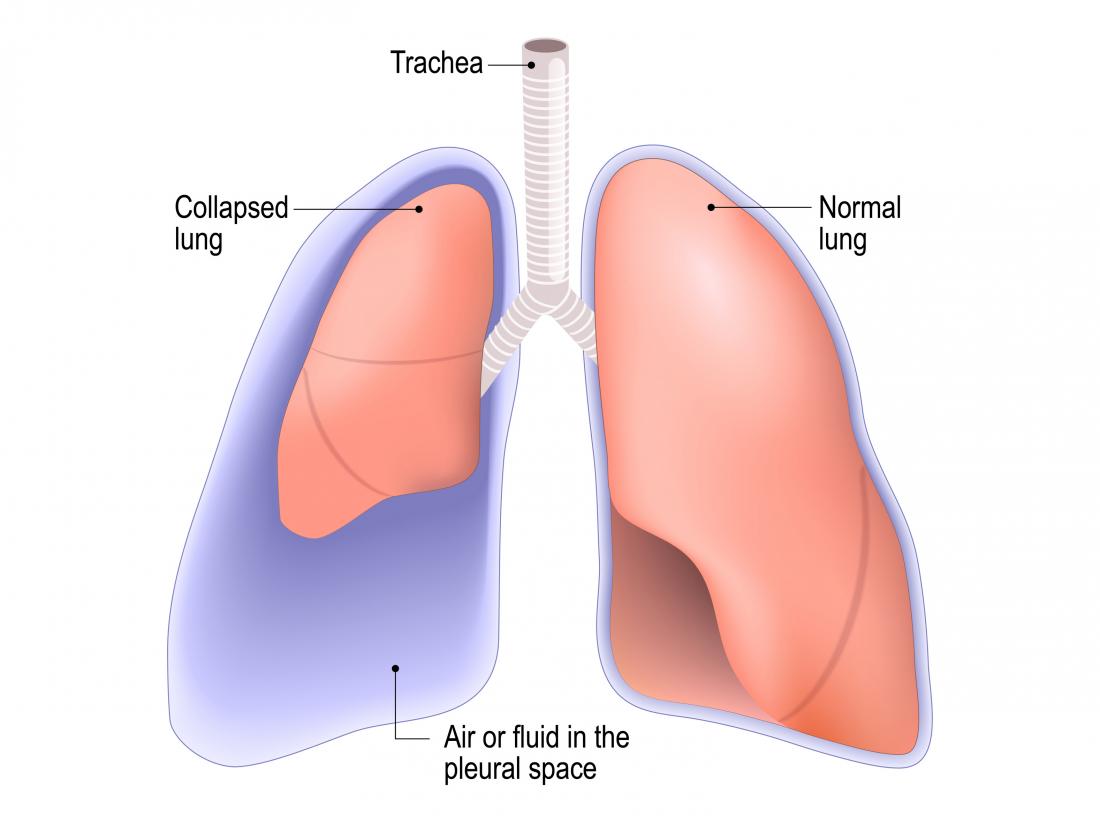
What are the symptoms of a pneumothorax?
The most common symptoms of pneumothorax are:
- sudden, sharp stabbing pain on one side of the chest, made worse by breathing in
- breathing problems
Symptoms and signs of a tension pneumothorax can include:
- severe distress
- fast heart rate
- difficulty breathing
- fast and shallow breathing
- cyanosis (blueish lips and skin)
- sweating
- low blood pressure
If you have trouble breathing or chest pain, call triple zero (000) for an ambulance.
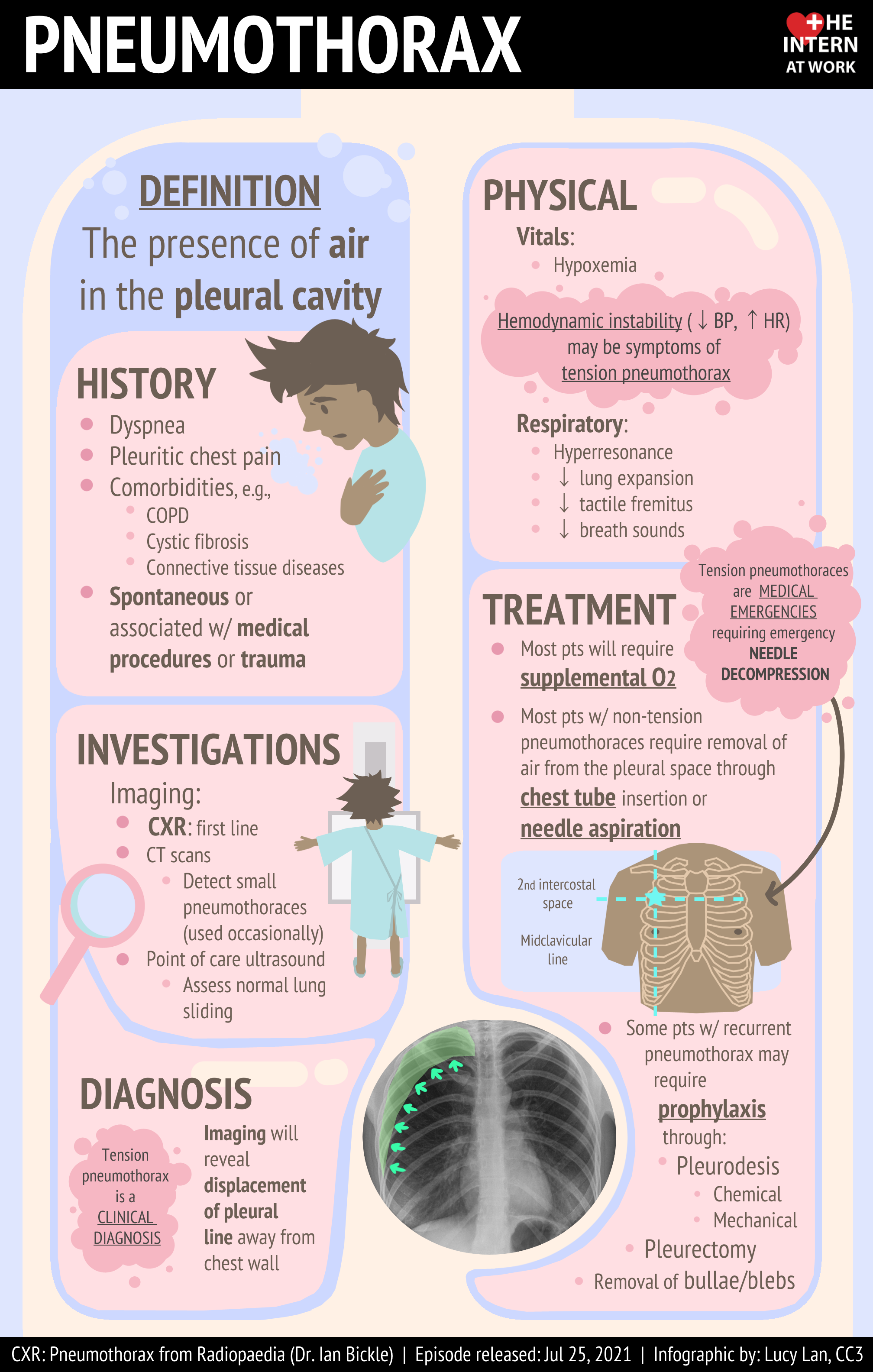
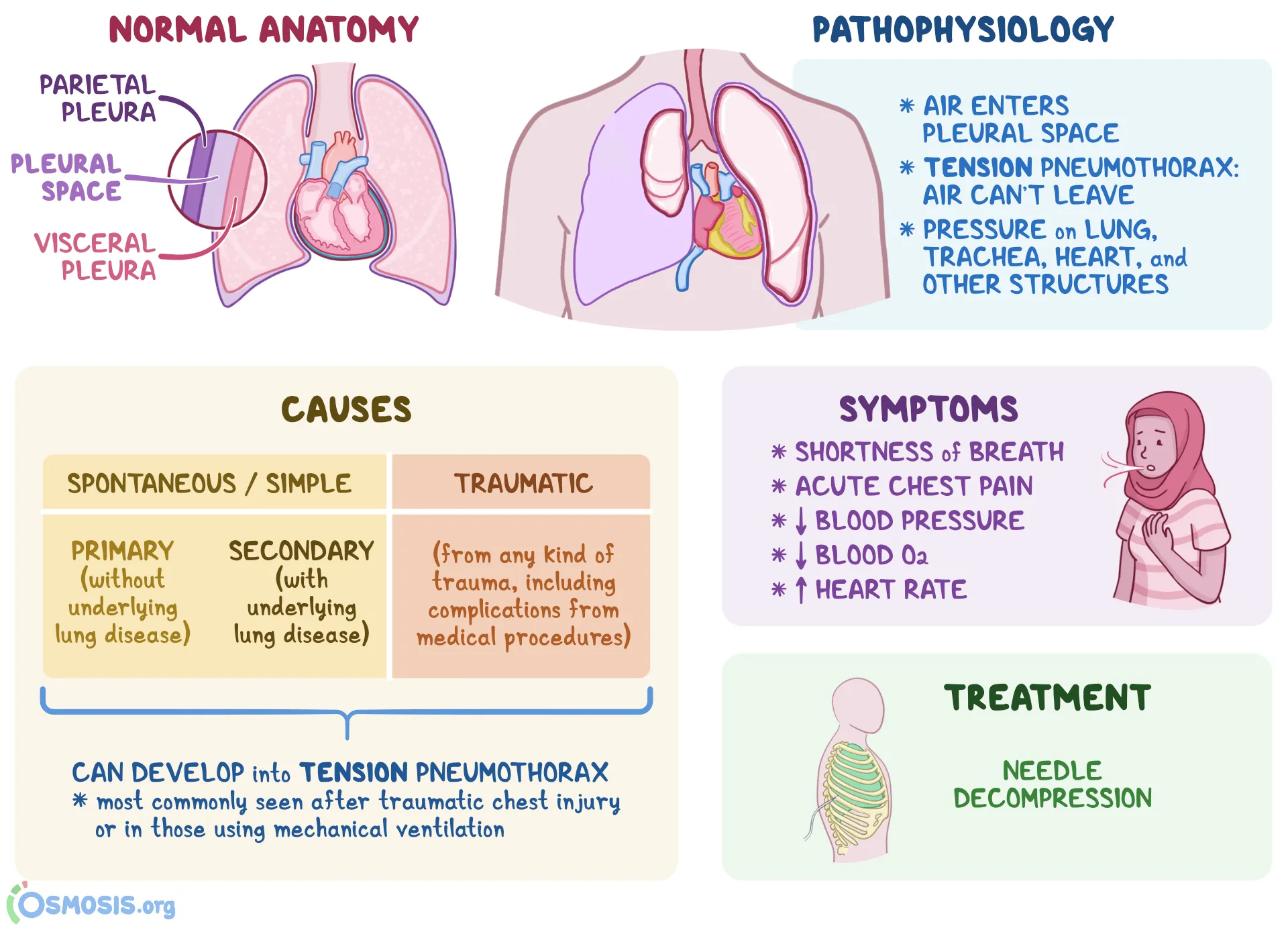
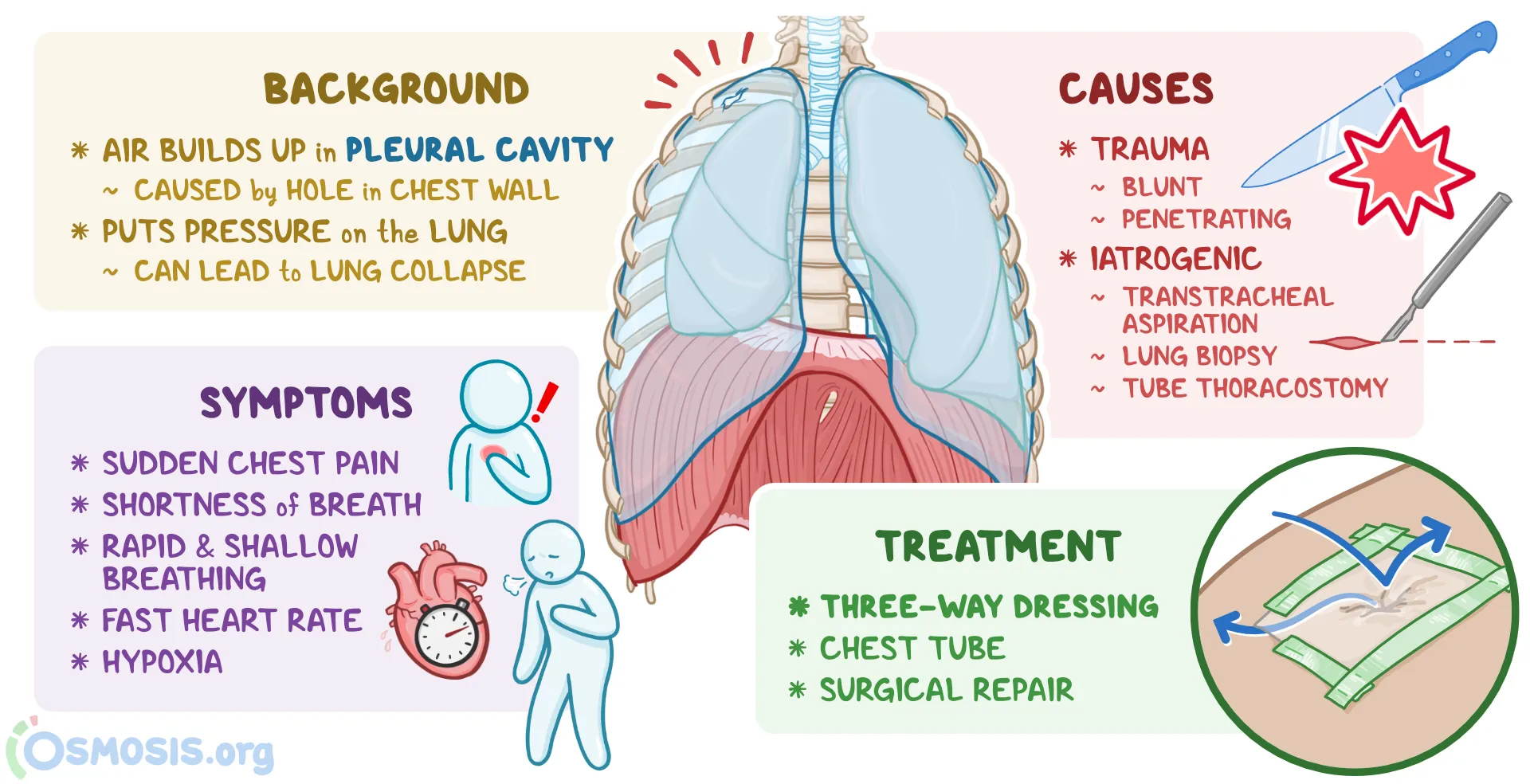
What causes a pneumothorax?
There are several different types and causes of pneumothorax.
Spontaneous pneumothorax
A spontaneous pneumothorax happens suddenly without an external event (such as trauma or a medical procedure).
A primary spontaneous pneumothorax is the most common type of pneumothorax. It usually happens in young people (including children) with no underlying lung disease.
It’s not known what causes primary spontaneous pneumothorax, but the risk is higher for people who smoke. It’s also more common in males who are tall and slim.
A secondary spontaneous pneumothorax can happen in people with existing lung conditions, such as:
- chronic obstructive pulmonary disease (COPD)
- asthma
- pneumonia
- tuberculosis
- sarcoidosis
- cystic fibrosis
These lung conditions can weaken the edge of the lung, making it more likely to tear and let air escape.
Traumatic pneumothorax
This type of pneumothorax is caused by trauma, such as:
- a car accident
- broken ribs
- a stab wound
An ‘iatrogenic pneumothorax’ is a traumatic pneumothorax that occurs as a result of a medical procedure.
When should I see my doctor?
See your doctor straight away if you develop symptoms of a pneumothorax.
How is a pneumothorax diagnosed?
Your doctor will ask about your symptoms and examine you, including listening to your chest with a stethoscope.
A chest x-ray is usually recommended to diagnose a pneumothorax. Sometimes a CT scan or ultrasound scan of the chest is also recommended.

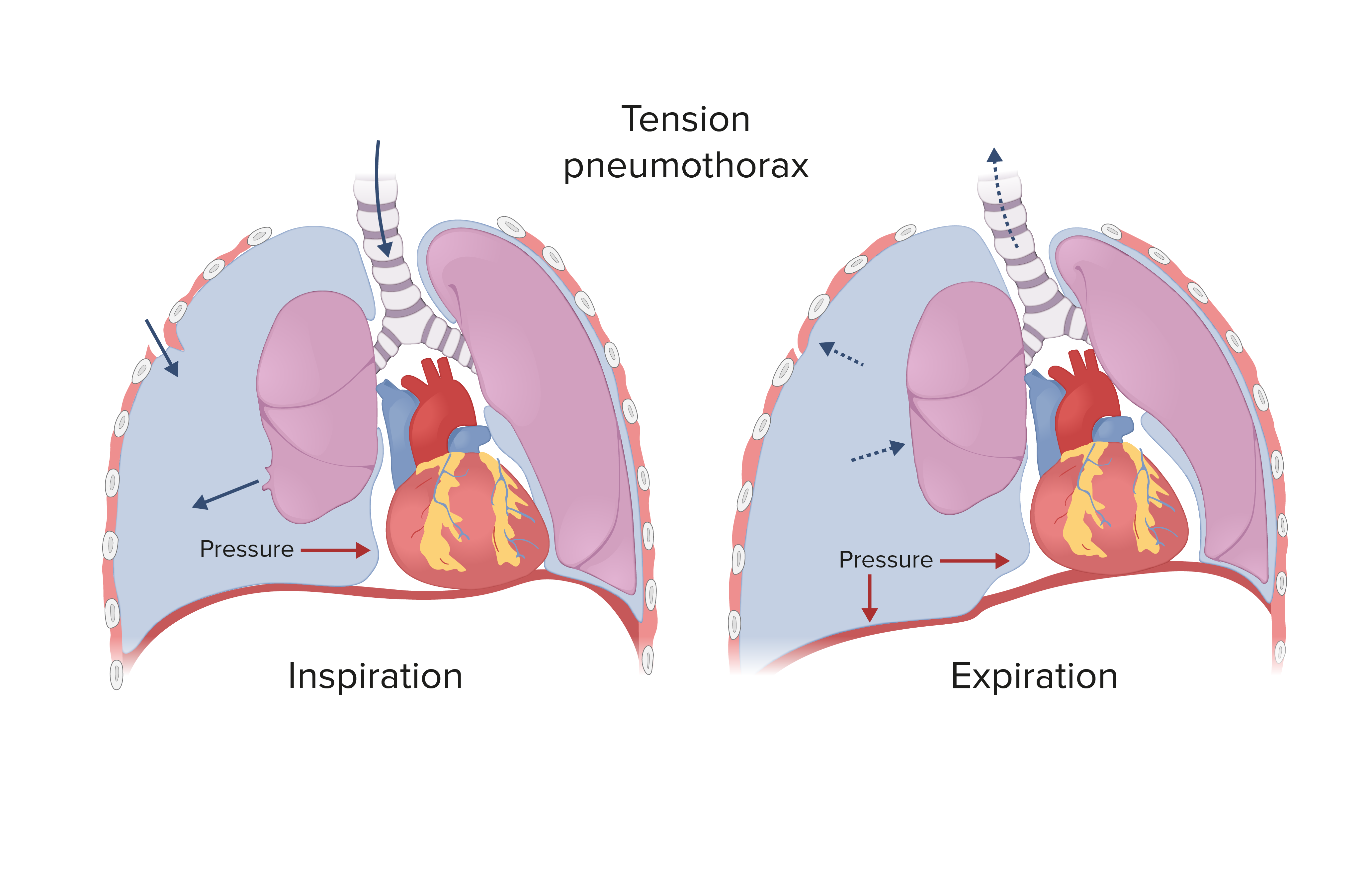
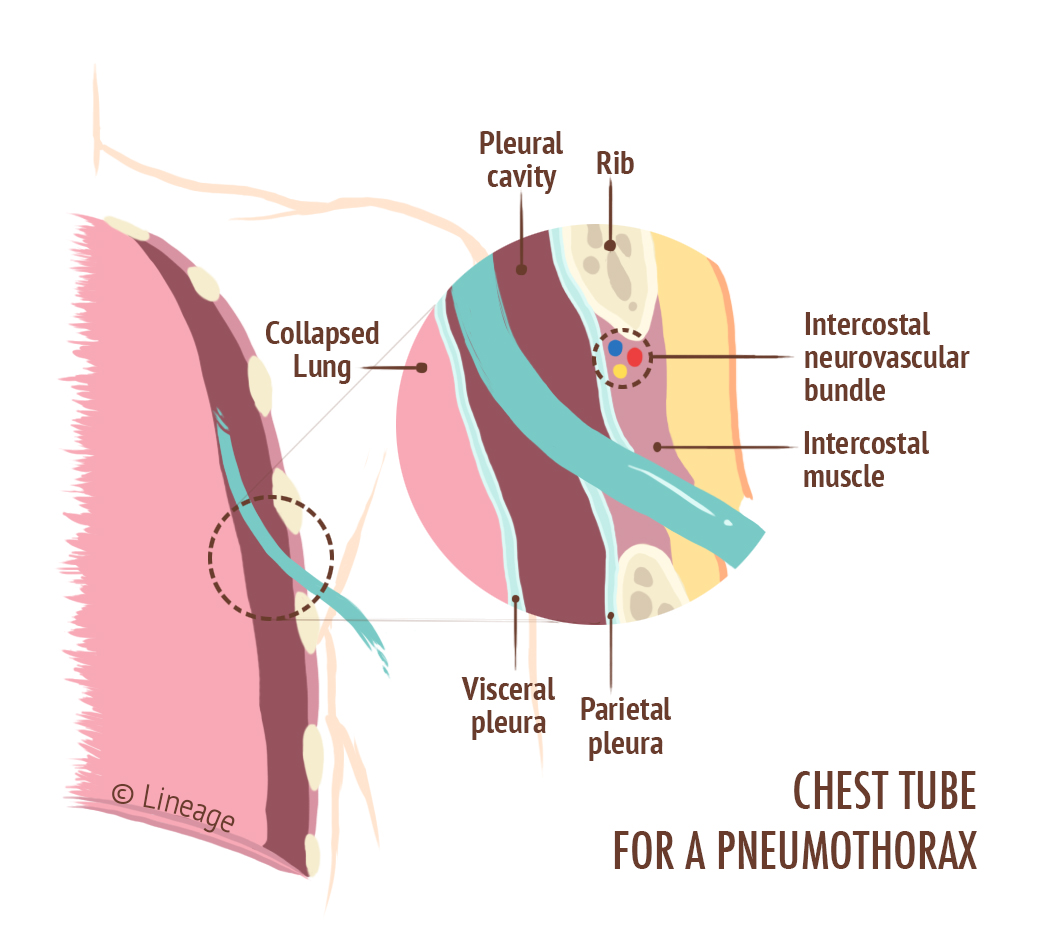
How is a pneumothorax treated?
Treatment for your pneumothorax will be guided by:
- your symptoms
- the type of pneumothorax
- the size of the pneumothorax
Observation
If you have a primary spontaneous pneumothorax and only minor symptoms, your pneumothorax might clear up on its own. Symptoms usually get better within 1-2 days without specific treatment.
Your doctor may recommend:
- observation in hospital
- oxygen (if needed)
- pain relievers
You might need to have a repeat chest x-ray after a couple of weeks.
Tension pneumothorax is very rare in people with a primary spontaneous pneumothorax.
Removal of trapped air
You may need to have the trapped air removed from the pleural space if you have:
- ongoing symptoms
- an underlying lung condition
‘Catheter aspiration’ involves inserting a thin tube into your chest wall. Local anaesthetic is used to numb your skin beforehand.
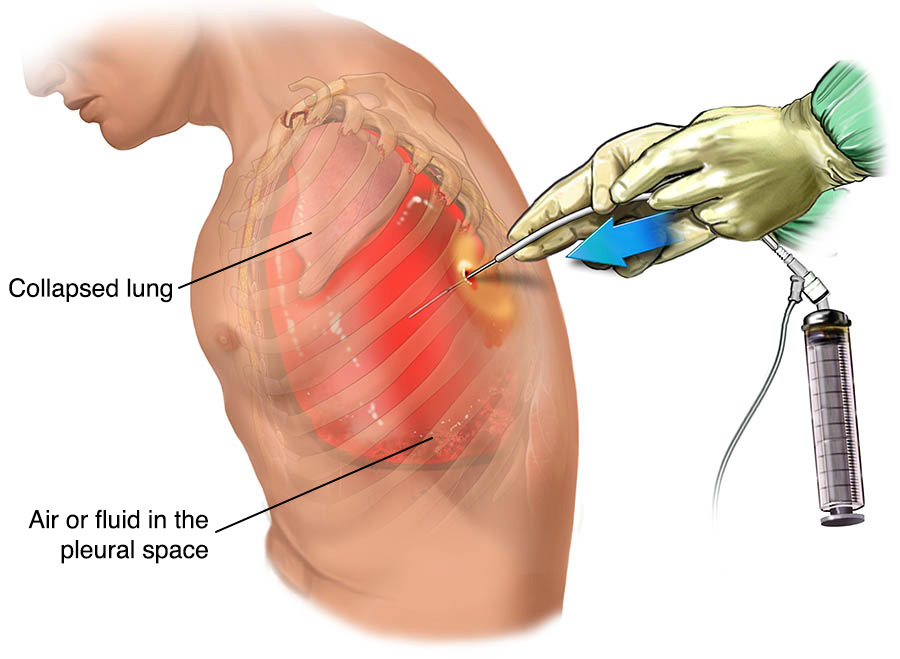
Catheter aspiration treatment involves inserting a thin tube into the chest wall. A syringe is used to suck air out of the pleural space.
A syringe is attached to the tube. The syringe sucks the air out from inside the chest wall.
Some people need a chest tube to release the air from the pleural space.
Can a pneumothorax be prevented?
If you’ve had a spontaneous pneumothorax, you’re at increased risk of having another one.
Changes in air pressure can cause a repeat pneumothorax. Talk to your doctor before:
- travelling by airplane
- travelling to high altitudes
If you’ve had a pneumothorax, your doctor will likely recommend against underwater diving.
Treatments to prevent pneumothorax
Quitting smoking can reduce your risk of having another pneumothorax.
Some people will need a procedure called a pleurodesis to prevent recurrence of pneumothorax. Pleurodesis aims to stick your lung to your chest wall.
Complications of pneumothorax
It’s possible to develop a persistent air leak if you had a chest drain inserted for a pneumothorax.
If this happens, your lung specialist will recommend treatment for your situation.
